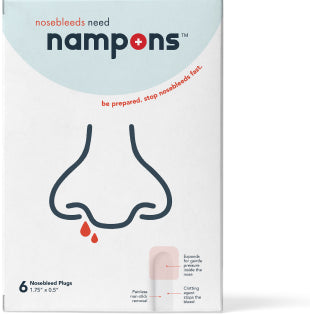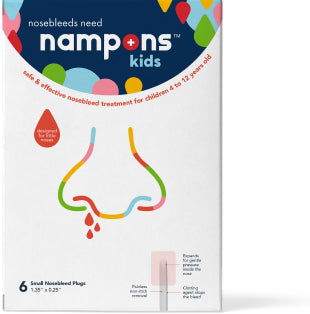This article was written by Dr. Drew Sutton, a retired ENT doctor who lives in the Southeastern US. During his 30 year career, he was an American Academy of Otolaryngology member and a Fellow of the American College of Surgeons.
We are entering fall and winter. The air will not only become more crisp, but the air will become more dry. Why?
The simple answer is that cold air cannot hold in as much moisture as warm air can. To make matters worse, most modern homes in the US use forced air heating which means the furnaces use combustion to create hot air. The result is that the hot air flowing from the vents in the house contains little water vapor.
Since it is cold outside and heating bills are high, we keep our doors and windows shut, settling in for the long haul until spring and summer. Our homes and most indoor environments pull moisture from our bodies, particularly our mouth and nose, leaving our nasal passageways and throats dry. With that dryness, we are more prone to respiratory illnesses because our natural protective systems cannot prevent bacteria and viruses from entering our airways.
In arid climates, such as in the deserts of California, Arizona, and Nevada, low humidity can occur all year round. If anyone has visited these or other areas, one is amazed at the difference the dry air makes and how it affects our comfort levels.
The ideal relative humidity for indoors is 30-40%. Humidity is the amount of moisture present in the air. Relative humidity is defined as how much water vapor is in the air, but also relative to how much moisture the air can hold.
The dew point is how the air feels according to how much moisture is in the air. The closer the dew point is to the actual air temperature, the more uncomfortable or sticky the air feels.
Dew points in the 40s or lower are considered dry. In the summer months, dew points are in the 60s or higher. In the winter months, dew points average 30-40 points lower. When the dew point reaches 30 or lower that is when our skin feels dry, cracked, or chapped, and our noses become dry and may bleed.
As an ENT doctor, nasal dryness during winter months represents a large part of patient complaints in my practice, particularly when patients have nosebleeds.
Dry Air Can Cause Nosebleeds and Other Health Issues
Dry air can cause skin irritation, and dry eyes and lips. It is common for people to develop itchy throats, allergy problems, and other respiratory problems.
Dry air can also lead to nosebleeds. Nosebleeds may result from our nasal and sinus linings becoming dry which may significantly inhibit our natural immunity to infection and cause inflammation. Our noses itch, burn, and may even become painful.
Many people resort to picking, rubbing, or manipulating their noses to provide comfort. The problem is that nosebleeds can result. The nasal lining is already more susceptible to trauma from even the slightest touch in some cases. The tiny blood vessels, particularly in the front part of the nose in the septum or wall between the left and right sides, can become fragile and break.
What Can Be Done to Help Prevent or Manage Nosebleeds During the Winter Months?
Above all, staying hydrated is important. This means drinking plenty of fluids, mostly water. Avoiding alcohol and smoking is essential since these activities can worsen dryness and even lead to dehydration.
Many people find that indoor humidifiers and sealing off your home from the outside can be beneficial. Skin moisturizing with lotions or oils is helpful too.
A word about humidifiers. Cold air is dry air. If you raise the humidity of your home in the winter above 40%, too much water in the air can cause problems too. That much humidity can wreak havoc on the walls of your home, inviting possible damage and the growth of unwanted bacteria and viruses.
In the winter time and when living in arid climates it is important to maintain the right temperature and humidity in our living and work spaces. We feel our best mentally, physically, and emotionally if we have a comfortable environment, particularly at night when we are sleeping.
But, what about the nose and sinuses? How can I moisturize my nasal airway and prevent nosebleeds before they start?
As an ENT doctor, the number one advice to patients is to use nasal sprays. There are many formulations available and the best have a sound delivery system with a balanced pH solution. Nasal saline can also be used as a lavage or flush, but most people will be satisfied with a spray, it is much easier to use and less messy. Those nasal saline sprays with saline only are preferred. Some manufacturers make nasal moisturizers with Aquegel which is highly effective.
Be cautious about using lotions or ointments inside the nose. These may have varying effects on different people. Antibiotic ointments are usually not necessary unless there is a specific reason such as an area of redness or swelling. Moisturizers on the outside nasal skin are fine.
Petroleum jelly for moisturization inside the nose can be helpful. It can be messy, but it prevents picking and can ease the urge to itch or rub the nose. The keys are not to use it too much, or too frequently, and to avoid using it for prolonged periods.
Many people find that a hot shower, steam, or sauna is a good way to humidify the nose. There are products available for home facial treatments that can also relieve a dry nose.
By preventing nasal dryness, nosebleeds are usually prevented. After many years of practice as an ENT physician, I have found that those patients who are experiencing nosebleeds during the dry winter months benefit from using Nampons.
Nampons can be effective in stopping nosebleeds and avoiding a visit to the emergency room or doctor’s office. Nampons provide both compression and help with blood clotting.
Key Takeaways
- Winter brings cold air and cold air is dry air.
- Using nasal saline, humidification, and petroleum jelly is effective in moisturizing the nasal cavity and sinuses



